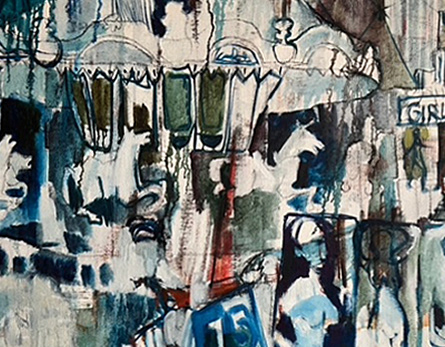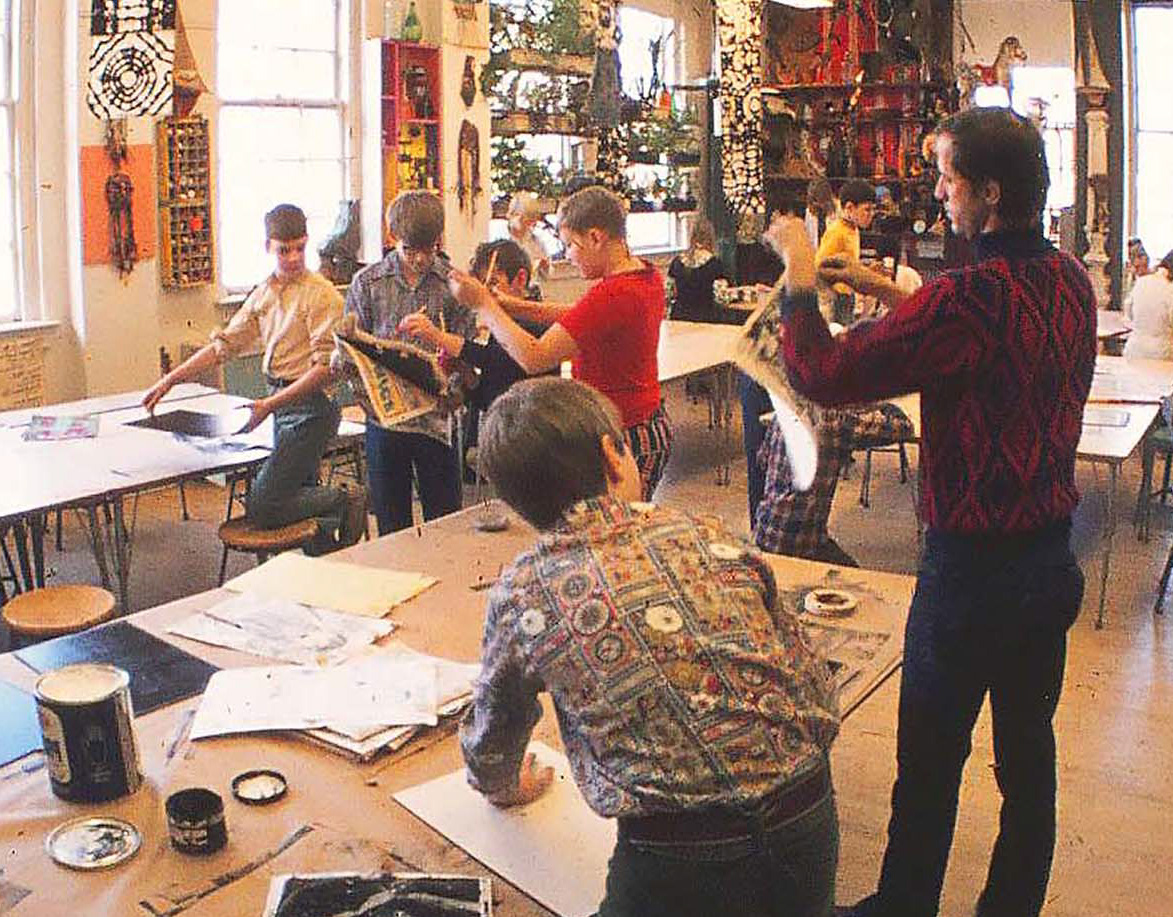My dad, David Hodge, always says that the best ten years of his life were when he was teaching Art at the Rose C. Swart Laboratory School at what is now UW-Oshkosh. Each day was one of exploration and experimentation, of releasing children’s inner artists and helping them recognize creativity within themselves.
The situation at Campus was unusual in that my dad was free to try whatever projects he wanted. He could incorporate just about anything into a lesson and challenged children to experiment in “grown up” artistic techniques. That freedom translated into an excitement that all of us, his students and student teachers alike, felt.
There was real freedom in the Art room. We had space to be as curious and creative as we wanted to be. Art professors and visitors were often astonished by the beauty and the skill demonstrated in our work. They would incredulously ask, “You did reduction printmaking with junior high students?” Well, why not?
My dad believed that children’s art was Art with a capital A.
One aspect my dad focused on was teaching us to not just to look but to really see the world around us in all its surprising detail. By truly seeing that bird or the antique toy he found on the curb on the way to school we could unlock secrets. In his still lifes he took ordinary objects out of context and put them next to things we had never seen before—a clinker shaker, an Atwater Kent radio, a 19th-century potato seeder, and so much more. The juxtaposition between the familiar and the unexpected allowed us to consider the different objects in a multitude of ways—visual, historical, and social. How did people use those things?
Generally, there was no such thing as a mistake in Art class because often the “mistakes” were more interesting than what we had set out to do in the first place. More importantly, we knew that Art class was a safe place to try something new, sometimes having unintended consequences. Making mistakes was simply part of the learning process. And was it really a mistake if we learned something important from it?
My dad truly loved all the students in his classes and we all knew he loved us. Because he believed in us it helped us believe in ourselves and take chances we might not have otherwise. Art—and our art teacher—gave us courage.
Only after we left Campus School would we discover how rare our experiences in Art class were, and how uncommon it was to find a teacher who could help us not only blossom in Art but to flourish in life. To have a teacher with the time and freedom to treat all of us as individuals and to appreciate us for who we were—and who we are—was a precious thing.
To me, the sign of a great teacher is not just the students who like him or her in the moment, but the number of students who choose to stay in touch for years— even decades—after they have left school, who remember the classes that made them feel safe to explore, the classes where something crazy happened but it was all right and we could all laugh together. David Hodge is one of those uncommon educators and it makes me proud that he is my dad.
– Catherine Hodge
Cathy Hodge, David and Margaret Hodge's daughter
photo by Marcia Stone






